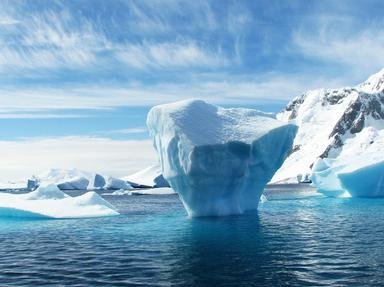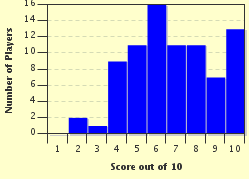Quiz Answer Key and Fun Facts
1. The Arctic Circle is a circle around the Earth at 66.5°N. Why is the number 66.5 used?
2. Which one of these events in the Northern Hemisphere only occurs north of the Arctic Circle, and becomes more common the further north a place is?
3. The International Date Line crosses the Arctic Circle in a body of water between eastern Russia and western Alaska (in the United States). What is this body of water called?
4. No part of Canada that is above the Arctic Circle is part of a province. Instead, there are three territories. Which one is the central one of the three?
5. To the east of northern Canada is Greenland. The Arctic Circle goes through Greenland. Is more than half of Greenland north of the Arctic Circle?
6. The Arctic Circle is not at exactly 66.5°N, but it is close enough for most purposes. However, using the exact latitude of the Arctic Circle (which is closer to 66.56°N, or 66° 34' N) significantly changes how much of this country crosses the Arctic Circle. At its true value, only a small island called Grímsey would cross it, while a rounded value of 66.5° would have some of the mainland of this country included. Which European country is it?
7. You travel east along the Arctic Circle in water, and you eventually find land. Your map says you are approaching Norway. There are many inlets of water. What are these inlets called?
8. Along the Arctic Circle, you cross Norway, then Sweden, then Finland. What is the name of the peninsula that includes these three countries?
9. After crossing Norway, Sweden, and Finland east across the Arctic Circle, you reach another country by land. Unlike crossing from North America to Europe, there is no ocean in between. Which country will you find next along the Arctic Circle?
10. Approximately how much of the length of the Arctic Circle lies within Russia, including bodies of water inside Russia?
Source: Author
hotdogPi
This quiz was reviewed by FunTrivia editor
Tizzabelle before going online.
Any errors found in FunTrivia content are routinely corrected through our feedback system.

